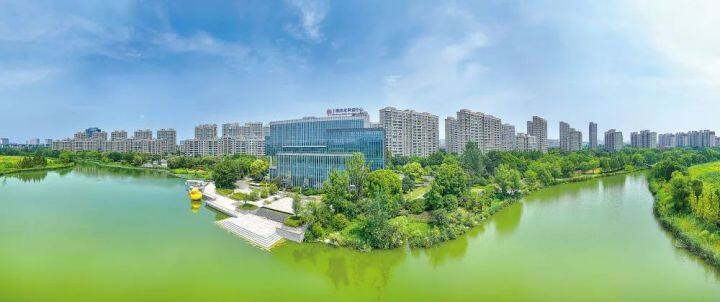Nantong's counties, districts seek to harness Shanghai's innovative strength

Shibei Hi-Tech Zone in Chongchuan district, jointly developed by Shanghai Shibei Hi-Tech Co and Nantong authorities. [Photo provided by Xu Congjun to chinadaily.com.cn]
Nantong, where the Yellow Sea and the Yangtze River meet, is building eight bridges spanning the Yangtze River, facilitating enhanced connectivity with Shanghai and South Jiangsu.
Nantong's seven counties and districts have established 14 offshore innovation centers or research and development centers in Shanghai, housing 120 incubation projects.
Notably, Rugao has collaborated with prestigious institutions such as Shanghai Jiao Tong University, Fudan University, Tongji University, East China University of Science and Technology to establish five innovation enclaves. Additionally, Rudong, Qidong, and Nantong National High-tech Industrial Development Zone have also set up offshore incubation centers in Shanghai.
The concept of a "scientific innovation enclave" is about more than just industry relocation and financial assistance; it involves maximizing talent resources from Shanghai and spatial resources in Nantong to expand collaborative opportunities.
"We prefer to extend the enclave's reach to the origins of scientific and technological achievements, collaborating with universities and research institutions to seek new innovation opportunities," said Chen Minghua, secretary of the Party Working Committee of Rugao High-Tech Industrial Development Zone.
While Nantong's growth was historically impeded by the Yangtze River, the city is now experiencing a flourishing period of development, propelled by the Yangtze River Delta integration strategy and the construction of eight cross-river bridges.
Bibo, an intelligent chassis manufacturer for automobiles based in Shanghai with a production base in Chongchuan district, has strategically positioned its R&D center in close proximity to Shanghai Hongqiao Business District. Liu Xingbo, the plant manager of Bibo's Nantong manufacturing center, highlighted the significance of the company's layout, with production and R&D facilities only a 10-minute drive from the high-speed rail station.
Over the past five years, the number of industry-university-research cooperation projects between Shanghai and Nantong has been steadily increasing at an average annual rate of 20 percent, surpassing 1,000 projects in total. Wu Jiahua, head of the Nantong science and technology bureau, emphasized that the city's collaboration with Shanghai has entered a new phase characterized by comprehensive acceleration and major breakthroughs.









